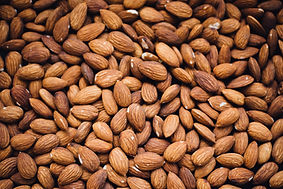Macadamias: The Situation is Improving in 2024 After Significant In-Shell Sales in 2023
The solution to low prices is low prices. After macadamia prices reached an all-time low in 2023, market players are more optimistic for 2024. Global demand is rising steadily, which should also support prices. Global Macadamia Production Estimates (tons)
Country | 2023 | 2024 | Change |
South Africa | 79,700 | 92,000 | 15.4% |
China | 67,900 | 68,500 | 0.9% |
Australia | 48,400 | 56,000 | 15.7% |
Kenya | 42,500 | 46,000 | 8.2% |
Global Macadamia Demand Continues to Rise
Based on solid demand driven by historically low macadamia prices in 2023, carryover stocks into the 2024 macadamia crop have been very low. As such, at this stage, a lot of Australian macadamia has been solidly committed. Macadamias have become the most expensive nut in the world in recent decades, primarily due to constantly growing global demand. Fresh Plaza estimates that macadamia demand is increasing by around 8% annually.
China as the Most Important Buyer
SAMAC reports that macadamia prices in South Africa are recovering from the historic lows of last year. The harvest is almost complete, and market players are optimistic for the 2024/2025 season, even though industry experts are still keeping a critical eye on price developments. Current crop estimates are 90,135 mt of dried in-shell macadamias, representing a 14% increase compared to last year's 78,091 mt. South Africa maintains its position as the world's leading macadamia producer.
Across the market, there are indications that prices for shelled and unshelled macadamias will increase by 10 to 30%, depending on the type, size, and crack-out style. Roelof van Rooyen, director of Global Macadamias, explains that after global macadamia prices reached historic lows in 2023, Chinese buyers, in particular, cleared their warehouses. The low macadamia prices paid last year prompted many farmers to sell directly to China, the world's largest buyer of in-shell macadamias. The advantage was that buyers often offered immediate payment and could help cash-strapped farmers quickly.
Hong Kong and China procured record volumes exceeding 90,000 tons of in-shell macadamias in 2023. Forecasts for the 2024 crop year show that global in-shell macadamia production will rise by 7% to 339,200 tons, according to AMS reports based on the roundtable discussion held at the INC Congress in Vancouver. Although harvesting is still underway in South Africa, the leading producing country, and it is difficult to assess final figures at present, the crop size is expected to rise by 15%. The macadamia quality is also encouraging. Yet, the local industry is concerned about the high volumes sold as in-shell nuts and the impact this will have on the kernel market. The issue is that suppliers sell in-shells for quick cash, meaning that fewer volumes will be available for producing kernels.
Strange Sales Patterns (In-Shell Macadamia Sales vs. Macadamia Kernels)
China's local macadamia production will only witness a nominal uptick of 1% as flowering was good, but dry weather then set in. This was the case in the main producing province of Yunnan, which is expected to supply 57,000 tons this year. China bought record volumes of in-shells in 2023, with online retailers running aggressive promotional activities as the main driver. The issue is that demographics are changing, with younger consumers trying out new products with innovative tastes, including snacks and bakery foods containing macadamias.
In Australia, the current crop year has started with better farmgate prices and higher demand. Domestic consumption has risen in the past 12 months. Despite rain causing disruptions in some places at the start of the harvest, production is expected to grow by 16%. As more in-shells were sold than anticipated in 2023 and the production estimates for last year have been revised downwards, the 2023 kernel inventories are not as high as expected. Sales should return to more normal ratios of in-shells vs. kernels this year.
As new plantings are bearing fruit in Kenya, initial projections show that production is expected to rise by 8%. Yet, growers report that they have witnessed an extensive period of continuous rains.


댓글